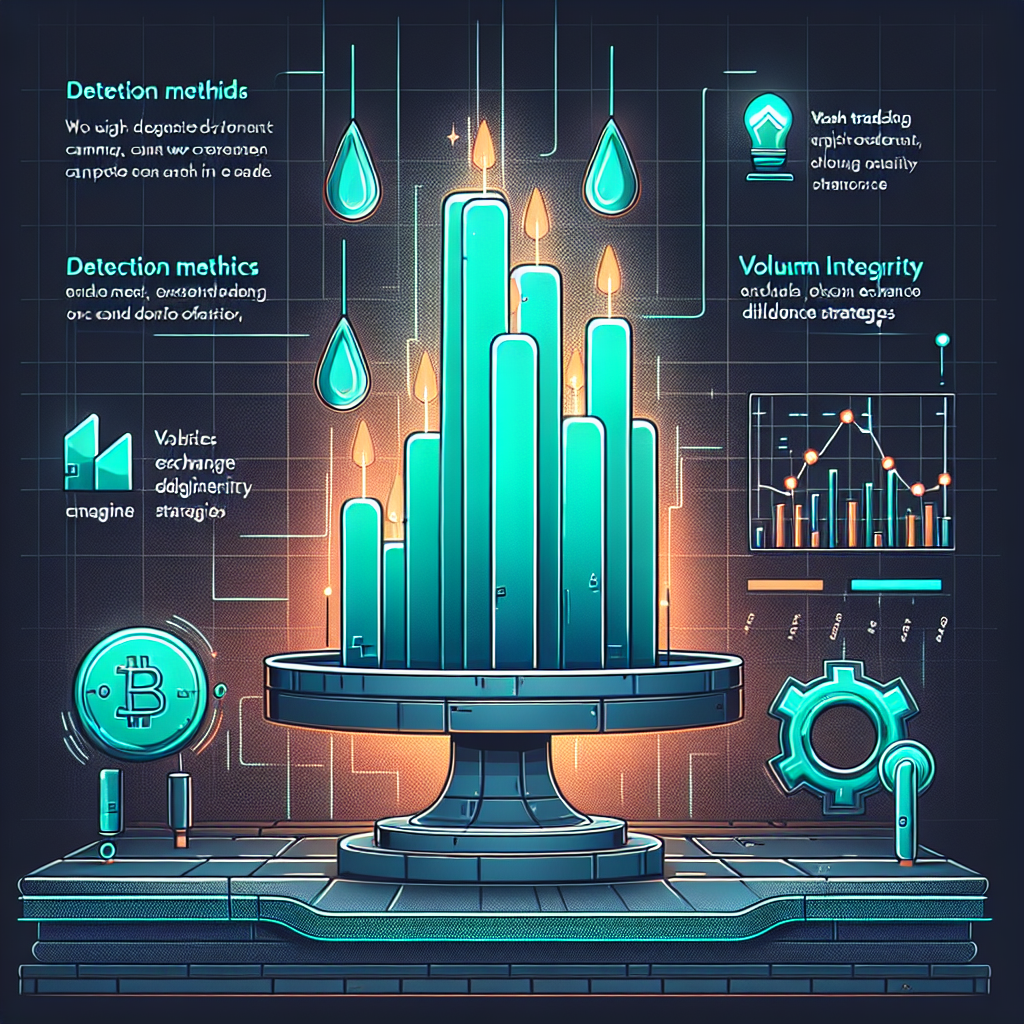Wash Trading in Crypto Markets: Detection Methods, Volume Integrity Metrics, and Exchange Due Diligence Strategies

Introduction: Why Wash Trading Matters in Crypto
Wash trading — the practice of buying and selling the same asset to create artificial activity — has plagued financial markets for decades, but the problem is especially acute in cryptocurrency. With thousands of lightly regulated exchanges competing for users, some venues inflate reported volume to climb ranking tables, attract listings, and earn higher fees. Fake activity distorts price discovery, lures traders into illiquid markets, and erodes trust in the entire digital-asset ecosystem. Understanding how to detect wash trading, measure volume integrity, and vet exchanges is therefore critical for regulators, institutional allocators, and retail investors alike.
How Wash Trading Distorts Crypto Markets
In traditional equities, surveillance systems, mandatory reporting, and punitive fines deter most fraudulent volume. Crypto markets, by contrast, are distributed across jurisdictions, and many platforms operate with minimal oversight. Wash trading impacts the market in four key ways:
- Price Manipulation: Fictitious volume can push prices up or down, triggering algorithmic strategies or stop-loss orders.
- Ranking Inflation: Aggregators such as CoinMarketCap and CoinGecko sort exchanges by volume, so spoofed trades boost visibility and user acquisition.
- Liquidity Mirage: Market makers rely on depth and turnover metrics; fake activity masks true liquidity, increasing slippage for genuine orders.
- Regulatory Risk: Entities that knowingly engage in or facilitate wash trading face potential litigation and reputational damage.
Detection Methods Used by Analysts and Regulators
Because blockchain data are transparent yet pseudonymous, detecting wash trading blends on-chain forensics with traditional market-microstructure analytics. Below are widely used methods:
1. Order Book and Trade-Level Analysis
Investigators examine time-stamped trade feeds to spot rapid alternating buys and sells at identical prices from linked accounts. High self-trade ratios — where the same identifier is both buyer and seller — are classic red flags. Abnormal order-to-trade ratios, thin spreads coupled with massive volumes, and repetitive patterns at millisecond intervals also suggest automation designed to fabricate turnover.
2. Address Clustering and On-Chain Tracing
For decentralized exchanges (DEXs) and tokens that settle on public chains, analysts cluster wallet addresses using heuristics such as transaction graph similarity, shared spending patterns, and common gas-fee usage. If two addresses funding opposite sides of a trade consistently interact or originate from the same exchange hot wallet, the probability of wash trading increases.
3. Machine Learning Anomaly Detection
Advanced quantitative firms feed historical trade data into unsupervised models to learn normal behavior, then flag outliers. Features might include trade size distribution, inter-trade time, and counter-party diversity. Algorithms such as isolation forests and autoencoders can surface clusters of suspicious trades without hard-coded rules, improving scalability across thousands of trading pairs.
4. Cross-Venue Correlation Checks
Legitimate volume tends to co-move across reputable exchanges because arbitrage rapidly closes price gaps. When one platform prints huge spikes with little corresponding action elsewhere, the discrepancy hints at wash trading. Analysts compare rolling 5-minute volumes, volatility, and order-book depth to identify anomalies unique to a single venue.
Key Volume Integrity Metrics
Beyond binary detection, investors need quantitative gauges to rank exchanges by data quality. Commonly cited metrics include:
- Self-Trade Ratio (STR): Percentage of total volume where buyer and seller IDs match. Values above 5% for liquid pairs are suspect.
- Unique Trader Count: Number of distinct counterparties per day. A healthy market shows a broad participant base; narrow counts with high volume imply internal churn.
- Trade-to-Order Ratio (TOR): Genuine markets feature many canceled orders relative to executed trades. Extremely high TORs suggest pre-matched internal activity.
- Order Book Depth Consistency: Real liquidity shows correlated depth on both bid and ask sides. Shallow books backing outsized reported volume indicate wash-trade pumping.
- Volume Synchronization Index: Statistical correlation of volume spikes across top venues. Low synchronization for a single exchange is a warning sign.
Exchange Due Diligence Strategies
Institutional traders, token issuers, and fund managers increasingly apply rigorous due diligence before onboarding an exchange. Recommended steps include:
- API Scraping & Historical Audits: Pull granular trade data over several months to compute integrity metrics. Irregularities uncovered early can prevent costly exposure.
- Third-Party Certification: Engage blockchain analytics firms such as Chainalysis, Kaiko, or Nansen to perform independent volume audits and attestations.
- Transparency Reports: Best-practice exchanges publish cold-wallet addresses, proof-of-reserves, and real-time volume dashboards that exclude self-trades.
- Fee Structure Analysis: Platforms with zero-fee or trading-mining incentives have higher wash-trade risk. Tiered taker fees discourage circular trading.
- Regulatory Status & Legal Opinions: Licenses from jurisdictions like Singapore, Switzerland, or the U.S. indicate stricter surveillance requirements.
The Growing Role of Regulators and SROs
Authorities are stepping up enforcement. In the United States, the Commodity Futures Trading Commission (CFTC) has fined crypto firms for manipulative wash trading in Bitcoin futures. Asia-Pacific regulators are embedding real-time monitoring tools that require exchanges to submit trade data with customer identifiers. Meanwhile, self-regulatory organizations (SROs) such as the Virtual Commodity Association are drafting best-practice frameworks that mandate surveillance sharing and periodic audits to elevate industry standards.
Protecting Yourself as an Investor or Trader
Retail participants can limit exposure to fake volume with a few practical habits:
- Use volume-weighted rankings from data providers that apply wash-trade filters instead of raw figures.
- Check the bid-ask spread and order-book depth directly in the exchange interface before placing large orders.
- Monitor social-media reputation and regulatory news; abrupt platform delistings are red flags.
- Prefer exchanges that provide proof-of-reserves and undergo SOC 2 or ISO 27001 audits.
Conclusion: Toward Transparent and Trustworthy Crypto Markets
Wash trading will not disappear overnight, but better data analytics, heightened regulatory scrutiny, and informed market participants are closing the gap. By combining robust detection methods, clear volume integrity metrics, and thorough exchange due diligence, stakeholders can weed out bad actors and promote genuine liquidity. As transparency tools mature, the crypto market will continue to evolve into a more efficient and trustworthy arena for innovation and investment.